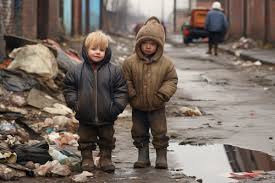July 19, 2024 — A new international study has unveiled alarming disparities in life expectancy in India during the COVID-19 pandemic, revealing that the pandemic exacerbated pre-existing social inequalities. The study, co-authored by Dr. Aashish Gupta and Professor Ridhi Kashyap from the University of Oxford, was published today in Science Advances.
The study estimates that India experienced an excess of 1.19 million deaths in 2020, significantly higher than official reports and the World Health Organization’s estimates. This figure represents a 17% increase in mortality compared to 2019, highlighting a grave underestimation of the pandemic’s impact.
“Our findings challenge the narrative that the pandemic’s mortality impacts were not significant in 2020,” said Professor Kashyap. “While much attention has been given to the mortality surge in 2021 caused by the Delta variant, our study shows that substantial and unequal mortality increases occurred earlier in the pandemic.”
Socio-Demographic Disparities
Analyzing high-quality data from over 765,000 individuals, the study examined changes in life expectancy by sex and social group between 2019 and 2020. The results underscore that marginalized groups—who already faced lower life expectancy—suffered disproportionately during the pandemic.
The study revealed a 1.3-year decline in life expectancy for high-caste Hindus, contrasted with a 5.4-year decline for Muslims and a 4.1-year decline for Scheduled Tribes. These groups, already disadvantaged, saw their life expectancy fall even further, highlighting a deepening of social inequities.
Gender Disparities
The research also uncovered significant gender disparities, with women experiencing a 3.1-year decline in life expectancy compared to 2.1 years for men. This trend is particularly concerning given that, unlike in high-income countries where excess mortality was higher among men, Indian women faced greater pandemic-related mortality.
Dr. Gupta noted, “The pandemic further widened the gap between privileged and marginalized social groups. It also exacerbated pre-existing gender disparities in healthcare and resource allocation.”
Impact on Younger Populations
In contrast to high-income countries, where older age groups experienced the most significant life expectancy declines, India saw substantial losses across all age groups. The youngest and oldest populations were particularly affected, with excess mortality among children potentially linked to the pandemic’s indirect effects, such as economic downturns and disruptions to public health services.
Policy Implications
Professor Kashyap emphasized the need for policies that address social determinants of health to mitigate future health crises. “Our study underscores the importance of considering inequality when measuring mortality. Pandemics can worsen, rather than alleviate, existing disparities, particularly when systemic issues are not addressed,” she said.
The study highlights the potential for using retrospective mortality data to estimate accurate mortality figures in challenging contexts. It also serves as a crucial reminder of the need for equitable health policies to address the underlying social factors that influence health outcomes.
For further reading, the study titled “Large and unequal life expectancy declines during the COVID-19 pandemic in India in 2020” is available in Science Advances (DOI: 10.1126/sciadv.adk2070).












